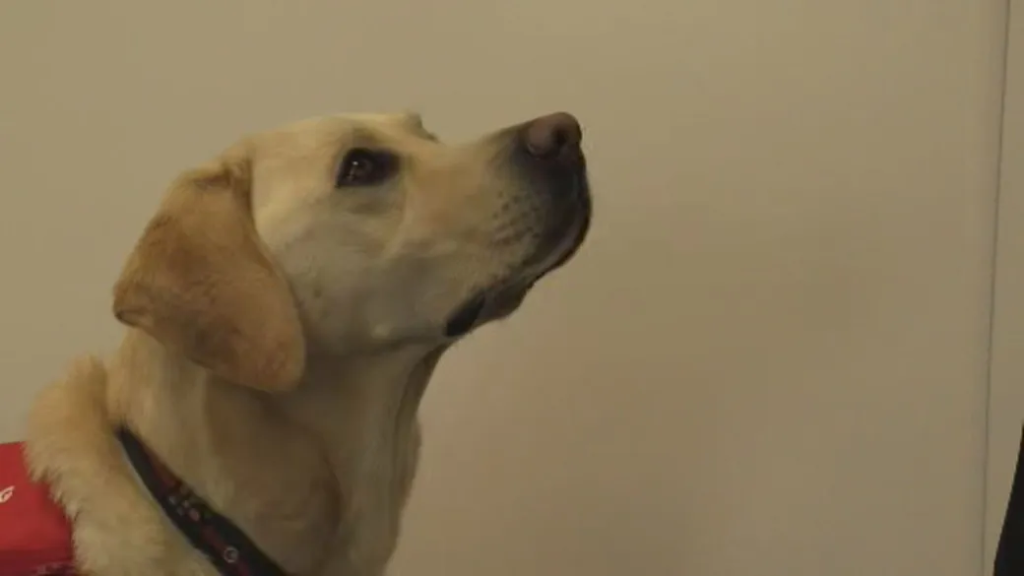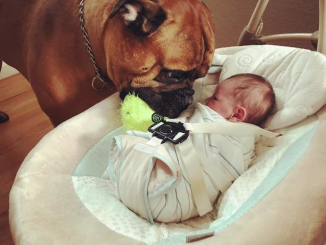
As the availability of COVID-19 tests dwindle across Canada, another option to detect the virus in the form of a furry friend may be the next best thing.
Multiple studies show that dogs can be more effective, faster and potentially less expensive than the current tests on the market.
The research has grown since 2020, with University of California Santa Barbara professor Tommy Dickey finding the collective research shows trained scent dogs are “as effective and often more effective” than both the rapid antigen tests many people keep in their homes, and even the PCR tests deployed at clinics and hospitals.
But even with studies showing their effectiveness, COVID-19-detecting dogs are deployed only in certain jurisdictions in various countries.
One such place is the Canines for Care program at Vancouver Coastal Health (VCH), which started looking into the possibility of training dogs to detect COVID-19 in early 2021.
Dr. Marthe Charles, division head of medical microbiology and infection prevention and control at VCH, said the idea stemmed from the early reliance on laboratory testing.
“I think there was a will from public health at the time and also from the various levels of government to try to find a way that was fast, accurate and non-invasive to be able to detect and train as many people as possible,” Charles told Global News in an interview.
Three dogs — two Labrador retrievers and an English springer spaniel — were brought in for training. The dogs were exposed to items such as masks that were worn by patients either negative or positive for the virus. This trained the dogs to recognize what is and is not COVID-19.

Charles said the dogs were trained since being puppies to associate the scent of COVID-19 with food and were rewarded each time they correctly detected a positive case of the virus.
“So from early on in their lives, they’ve associated the scent of a case of COVID to a rewarding scent,” she explained.
This reward method is not just used by VCM. It was also used with a group of dogs sourced in early 2021 for a French study, trained at detection using toys — usually tennis balls — as rewards.
Dr. Carla Simon, owner of Hunter’s Heart Scent Detection Canines in Calgary, said this method of training dogs is common. By using rewards, it can help motivate them to find the scent.
“We would pair, let’s say, the sweat samples with COVID, with their reward, and they notice that every time they find their reward, there’s that special smell,” she explained. “We just have to make it rewarding for the dog.”
She added, however, that the dog chooses the reward so trainers can ensure the canines “show up every day and want to do their job.”
Earlier this month, Dickey along with Heather Junqueira of BioScent, Inc. gathered several peer-reviewed studies into a review that was published in the Journal of Osteopathic Medicine. Dickey said the number of peer-reviewed studies over the past few years went from four to 29, incorporating the work of more than 400 scientists from more than 30 countries and 31,000 samples.
The review noted the effectiveness of dogs’ ability to detect COVID-19 comes down to their noses.

“The nose is not like humans,” Simon said. “It’s massively different, orders of magnitude different, and they can detect things without us being able to smell them.”
Humans have about five to six million olfactory receptors in their noses, while dogs have hundreds of millions. One-third of their brain is devoted to the interpretation of smell — something only five per cent of a human’s brain is committed to, according to Dickey’s review.
The study found dogs’ noses may even be able to detect pre-symptomatic COVID-19 cases, or even those who will develop symptoms later.
Dickey told us in an interview that this could help limit or stop the virus from spreading.
“The longer the wait is between your test and your result, that’s a latent period,” he said. “During that time you’re running around spreading COVID and you don’t know it. The dogs with a direct sniff will be done in seconds.”
Many of the studies conducted, including the work at VCH through the Canine for Care program, have shown dogs’ ability to detect the disease correctly with a success rate of more than 90 per cent. Additionally, the studies also showed a high speed at which the dogs could identify cases. In one study in Thailand, researchers reported the dogs had gone through thousands of samples in just a few weeks.
“The dogs take only one to two seconds to detect the virus per sample. Once they detect a patient, they will sit down,” said Chulalongkorn University professor Kaywalee Chatdarong, who led the 2021 project. “This takes only one to two seconds. Within one minute, they can manage to go through 60 samples.”
Even though the research suggested deploying scent-detection dogs could also be less expensive than rapid or PCR tests, Charles cautioned the logistics that go into training the dog is where it becomes “more prohibitive.”

In VCH’s case, training of the dogs included the medical microbiology lab to provide samples for use, working with infection prevention teams and control nurses, and if a dog identifies an area of concern, cleaning services may need to be utilized. And when it comes to rolling out testing using the dogs, enough staffing is needed for mass screening.
Despite this, while Charles says deploying the dogs widely could be difficult due to staffing and training, they are still one of several tools that can be used in COVID-19 detection.
“I think the way to see those dogs from my perspective is really like another tool in the toolbox and trying to prevent further transmission of pathogen of concern,” she said.
Dickey and Junqueira say dogs should have a place in “serious diagnostic methodology” including in helping should the world face a future pandemic.
She was abandoned with the largest tumor on her face and suffered for a very long time without any assistance

Meet Honey, This is the poor soul Dumaguete Animal Sanctuary rescued today. Honey was dumped in severe condition with the biggest tumor on her face. She was in discomfort for a long time since she was swollen and infected.

” We are with her now at Animal Wellness getting X-rays to find out if this mass is treatable. Her early blood tests revealed that her organs were working OK, but she is anemic. She was also found to have heartworm.
They will put her on anti-inflammatory for 2 weeks and also work on raising her red blood cell count. She will then require surgery and chemotherapy. She stands a high chance of living a regular, happy life!

She need to do surgery to remove the mass, followed by chemo if it is cancerous. Given the position of the tumour, surgeons will need to do the procedure at Animal Wellness, where they have gas anaesthetic, giving Honey the highest chance of survival.

Her red blood cell count is still low after 15 days in the center, therefore she will have a transfusion. Hopefully, surgery will be performed soon after.
“Day 17: Honey’s operation has just begun. Just before she was sedated, she was photographed with Rina and Rudylyn. We will do the procedure at Animal Wellness since gas anaesthesia is safer for more serious instances. Because the tumor is so close to her brain, the procedure will be lengthy and complicated.

Day 19: Honey’s surgery was as successful as it could be given that the tumor had grown around so many of her facial and optical nerves. Unfortunately, the nerves controlling her left eyelid had to be severed, leaving her with a little droop.

The tumor was huge, and as a result the surgical wound is large. She is eating chicken which is a good sign. She will be able to live a normal life even without it. She is already eating on her own, but her face is still swollen from the operation and inflammation, so doctors are hopeful she will eat more once that subsides.

She is still in the very early stages of recovery from such an invasive surgery, and each day she survives without complications, is a blessing. She made it through the procedure!!! Honey is still deemed critical, but she is awake and breathing.
“We just had the results of Honey’s tumor biopsied and unfortunately it’s malignant. Doxorubicin is the most effective chemotherapy treatment for the type of cancer she has. We must act quickly to halt the spread of any cancer that may still be present in Honey’s system.”
She hadaother tumor in her vagina but the amazing news is that the tumor in her vagina has shrunk by 60 percent since she started chemo and she has only had two sessions so far.
After more than 3 months, she’s gaining weight and is generally in good spirits despite being on chemo. Her prognosis is still uncertain because chemo affects the organs, but we are confident she will recover completely.



Leave a Reply